|
It has not before been noticed that in describing works of art painted by his fictional anti-hero, Charles Strickland, in the novel The moon and sixpence, which is loosely based on the life of Paul Gauguin, Somerset Maugham drew on actual works by Gauguin in his verbal descriptions. Sometimes the references are to specific paintings, at others to phases in his work. For readers familiar with Gauguin's artistic output, his writings on art and his biography, the effect of this insistent visual ‘quotation’ is to create a disturbing sense of aesthetic dissonance, in that it becomes difficult to accept the inarticulate, surly, impassioned but utterly grim and joyless figure of the fictional Charles Strickland as the source of these vivifying paintings, which possess their own real history and provenance. There is nothing in Strickland of Gauguin's child-like zest for life, his exuberance, his fantasies, his extrovert willingness to explain his art to friends and the public through fascinating if deeply unreliable writings. The reader must either attempt to blot all knowledge of Gauguin and his art from consciousness, thereby denying that Maugham is ‘quoting’ Gauguin's oeuvre, or else submit to an intolerable level of fictional incredulity and disbelief.
Verwysings na Gauguin se skilderye in Somerset Maugham se The moon and sixpence. Dit is nog nie vantevore opgemerk dat in die beskrywings van die kunswerke deur die fiktiewe antiheld, Charles Strickland, in sy roman The moon and sixpence (losweg gebaseer op die lewe van Paul Gauguin), Somerset Maugham beskrywings van werklike kunswerke deur Gauguin gebruik het nie. Soms verwys hy na spesifieke skilderye, soms na fases in Gauguin se werk. Vir lesers wat Gauguin se kuns, sy skryfwerk oor sy kuns en sy biografie ken, skep dié knaend visuele ‘aanhaling’ ‘n onthutsende estetiese dissonansie, omdat hulle moeilik kan aanvaar dat die woordarm, nors, passievolle maar onverbiddelik vreugdelose figuur van die fiktiewe Charles Strickland die bron kan wees van hierdie besielende kunswerke en hulle inspirerende geskiedenis. Strickland besit niks van Gauguin se uitgelate kinderlike lewenslus, sy fantasieë of sy uitbundige drif om fassinerende dog totaal onbetroubare uitsprake oor sy kuns teenoor sy vriende en die publiek te maak nie. Die leser moet óf al sy kennis van Gauguin en sy kuns uit sy bewussyn probeer vee, en daarmee ontken dat Maugham Gauguin se oeuvre aanhaal, óf ‘n ondraaglike graad van skeptisisme en ongeloof aanvaar.
As most readers will be aware, and as Maugham himself belatedly acknowledged in his 1933 preface, The moon and sixpence (1919; see Maugham 1968) is loosely inspired by the life of Paul Gauguin. What might be less obvious is that references in the novel to paintings produced by its fictional anti-hero, the artist Charles Strickland, clearly suggest either specific works by Gauguin or generic phases in his artistic development. This playful writerly co-option of actual paintings to represent the output of a fictional artist bears importantly on the novel's imaginative realisation and complicates its interpretation. For a readership familiar with Gauguin's life and art, awareness that Maugham is gesturing towards specific works by Gauguin has a twofold effect. A level of painterly verisimilitude is established which is difficult to ignore in responding to the novel. Secondly, a disturbing and unavoidable sense of cognitive and artistic dissonance is set up, in that the reader struggles to accept that the surly, inarticulate, impassioned but utterly joyless and grim figure of Charles Strickland could ever have produced the luscious, entrancing and mythically dense paintings seen in much of Gauguin's oeuvre.
Gauguin was garrulously eloquent about both his works and their intent; Strickland has nothing whatever to say about his art. There is in consequence a ‘dumbness’, a discursive lacuna, at the heart of this novel dramatising, celebrating and ironising the supreme value of art. The reticence, not in itself an artistic flaw, may have been occasioned in part by Maugham's stealthy reliance on Gauguin's paintings to supply his fictional anti-hero's oeuvre, at a time when Gauguin's own artistic writings were not yet widely available.1 But for today's readers, familiar with these paintings’ historical provenance and the stream of experimentation and theoretical discourse surrounding the artistic enterprise, recognition that Maugham is ‘quoting’ Gauguin's actual paintings gives rise to a troubling breach of imaginative verisimilitude, because they must consistently suppress this knowledge in order to entertain the fiction that Charles Strickland produced (Gauguin's) masterpieces.
During his absences in the South Seas, Gauguin's reputation, his mystique, flourished in Paris and was vividly alive amongst Maugham's circle in the ateliers and restaurants of turn-of-the-century Montparnasse. Here Maugham absorbed flourishing legends and stories about the maverick artist, some of them relayed by the Irish painter Roderic O'Conor who had fallen under Gauguin's spell in Pont-Aven. We know that Maugham encountered Gauguin's work first-hand when Gerald Kelly, the portrait painter, took him to see the famous 1903 Gauguin exhibition at the Galérie Vollard after which, in the words of Selina Hastings (2009:100), he had ‘become fascinated with both the man and his work’. Richard Brettell (1988) notes that:
only the 1903 exhibition … had a generous enough selection of major paintings and transfer drawings to give full measure to the achievement of the artist in his last years …(p. 389)
The impact of this exhibition must have played a large part in Maugham's decision to write The moon and sixpence.
As was commonplace in the popular aesthetic culture of the time, it was Gauguin's credo, his utter dedication to an art consciously in rebellious flight from western industrial modernity and bourgeois life, more than the art itself that so intrigued Maugham. From young adulthood, Maugham had been greatly interested in visual art and we can presume that, given the novelistic project he was contemplating, he would eagerly have sought opportunities to view Gauguin's work. However, aside from the 1903 exhibition, we have no direct means of knowing exactly which canvases he had seen, and where, or even what he originally felt about Gauguin's art, before setting out to write The moon and sixpence. Twenty years later it seems he did not rate Gauguin very highly. His summative judgment, expressed in ‘Paintings I have liked’, a brief essayistic tour of favourite works by different artists, first published by Life magazine in 1941, runs as follows:
Then there is Gauguin. He is not a great artist… I think his life and character more interesting than his paintings. I once wrote a fanciful description of a fruit piece in the museum at Stockholm, but it is in his Tahitian scenes that he is most truly himself. They are deliberately stylized, but they have an idyllic character that does recall those lovely islands of the South Seas and for one who has lived in them they evoke memories of a kind of sensual content and a happiness of the spirit which the passing of time can never quite dim. (Maugham 1984:52)
So, not much about Gauguin's paintings, a reaffirmation of interest in his life and character, and cool approbation for evoking a South Seas idyll in which Maugham can bask in his own memories. Of the impressionists, and in his early career Gauguin was an impressionist of sorts, Maugham clearly preferred Degas and Cézanne (Maugham 1984:53). But 20 years earlier, The moon and sixpence shows Maugham more than casually alert to Gauguin's output. In fact, with perhaps a touch of whimsy, he seems to have used Gauguin's paintings as an artistic backdrop to bolster his fictive sortie into a Gauguin-esque life story which interested him deeply, his own. The link to Maugham's personal history is belatedly revealed in the novel's closing lines, where the narrator abruptly introduces his readers to ‘Uncle Harry, for twenty seven years Vicar of Whitstable’ (Maugham 1984:252). If the reader knows that, aged 10, Somerset Maugham was sent to live with his uncle, the Rev. Henry McDonald Maugham, Vicar of Whitstable, following the death of his widowed father, Robert, in Paris in 1884, then the novel's status as a symbolic dialogue with the emerging pattern of Maugham's own life stands revealed. This is too large an issue to broach here.2 However, neither Maugham himself nor his fictional alter ego, Charles Strickland, make comfortable surrogates for Gauguin, if Gauguin's actual paintings do indeed stand behind Maugham's verbal evocations.
The reference that first alerted me to the possibility that Maugham was quoting Gauguin, visually, occurs in the narrator's account of his initial response to Strickland's work. Observing that ‘descriptions of paintings are always dull’, he continues:
First of all I was taken aback by what seemed to me the clumsiness of his technique. Accustomed to the drawing of the old masters, and convinced that Ingres was the greatest draftsman of recent times, I thought that Strickland drew very badly…. I remember a still-life of oranges on a plate, and I was bothered because the plate was not round and the oranges were lop-sided. (p. 170; References in the article to The moon and sixpence are to the Heinemann text in the Heron Books edition of 1968.)
Gauguin produced several still lifes of citrus fruit, including Nature morte aux oranges (1881, W65; Figure 1)3 and Oranges et citrons avec vue sur Pont-Aven (1890, W401; Figure 2), orthodox representations in which fruit and the bowls containing them appear conventionally round. But there is a later Tahitian image, produced whilst Gauguin was in the process of gradually relinquishing optical realism, entitled Nature morte aux fruits et piments (Pommes et piments in the Wildenstein-Cogniat catalogue; also known as Still
life with Tahitian oranges) (1892, W495), which corresponds rather closely to the narrator's strictures on Strickland's supposed work. Gauguin wrote of the painting: ‘it's the apple of my eye, and unless there's an absolute necessity I would part with it only after my last shirt’ (see Figure 3).4
 |
FIGURE 1: Nature morte aux oranges (1881, W65). |
|
 |
FIGURE 2:
Oranges et citrons avec vue sur Pont-Aven (1890, W401) |
|
 |
FIGURE 3:
Nature morte aux fruits et piments (Still life with Tahitian oranges) (1892, W495) |
|
The strictures offered are those of Maugham's narrator, who takes Ingres as his touchstone for contemporary draftsmanship, and not necessarily those of the author. Certain focal pieces of fruit in the 1892 painting are indeed unsymmetrical, as is the supporting table, and a superficial glance might easily suggest that the wooden receptacle is also strangely distorted. This is the only container in any of Gauguin's still-lifes of oranges that could credibly be described as a ‘plate’ rather than a bowl.5 The ‘plate is not round’ because it is a representation of one of the elongated, boat-shaped platters carved from a calabash or gourd, so common across the islands of the South Pacific, and the notion that Gauguin's oranges are unrealistically ‘lop-sided’ could only come from someone who has not looked closely at such fruit. In addition, the image ‘maps’ the elongated, panoramic format of the canvas on which it is painted. Maugham is gently satirising the visual inexperience of his narrator, whilst rehearsing typical historical responses to the subversiveness of post-impressionist art. In all, the visual cues suggest that Maugham may well have imaginatively appropriated Nature morte aux fruits et piments to represent Strickland's canvas.
In the same passage, further references to Strickland's paintings are generalised and do not evoke particular paintings, but point to specific phases in Gauguin's output:
The portraits were a little larger than life-size, and this gave them an ungainly look. To my eyes the faces looked like caricatures. They were painted in a way that was entirely new to me. (p. 107)
A look at Gauguin's portraits, especially the self-portraits, confirms this perception. See, for example, Self-portrait, ‘to my friend Carrière’ (1886, W384; Figure 4), seen in the Salon d'Automne exhibition of 1906, Self-portrait, ‘Les misérables’ (1888, W239; Figure 5) or Self-portrait in caricature (1889, W323; Figure 6).
 |
FIGURE 4:
Self-portrait, “to my friend Carrière” (1886, W384) |
|
 |
FIGURE 5:
Self-portrait, “Les Misérables” (1888, W239). |
|
 |
FIGURE 6:
Self-portrait in caricature (1889, W323) |
|
There are several others in this monumental mode. The heads are deliberately disproportionate and earnest realism is abandoned in favour of something approaching a decorative cartoon, in the modern sense, aiming at a fleeting symbolist evocation of character and demeanour rather than strict visual realism. ‘Ungainly’ seems an appropriate word. The rendering is deliberately rough and gestural rather than painterly and polished. When Strickland undertakes a commissioned portrait ‘of a retired plumber for two hundred francs’ (p. 96) – there is no such work in Gauguin's oeuvre – Maugham is evoking the ‘shocking’ willingness of the early modernist artists to tackle ‘low’ subjects rather than bask in the long tradition of noble patronage, a democratic trend going back to the realists of the mid-century such as Courbet. At Arles both Gauguin and Van Gogh had relished painting its mundane inhabitants, including the local postman, peasants and servants. It was all part of a revolutionary sense that the ordinary could be a fit subject for art. Of Strickland's landscapes, the narrator has this to say:
The landscapes puzzled me even more. There were two or three pictures of the forest of Fontainebleau and several of streets in Paris: my first feeling was that they might have been painted by a drunken cab-driver. I was perfectly bewildered. The colour seemed to me extraordinarily crude. It passed through my mind that the whole thing was a stupendous, incomprehensible farce. (p. 170)
There is no way of knowing whether Maugham had seen, or could have seen, examples of Gauguin's early landscapes. Their provenance makes this unlikely, but the passage suggests that he was aware of their character. Studio talk and conversation with his artist friends would have been sufficient to orientate Maugham's description. Aside from again ventriloquising a fiercely critical and uncomprehending strand of public response to the impressionist enterprise, the passage gestures rather effectively towards Gauguin's landscape output under the influence of the Barbizon School. Generally speaking, as David Sweetman (1995:46) remarks:
to go out into the forest of Fontainebleau… and paint direct from nature was in itself a protest, a statement that reality with all its flaws was more vital than the ordered antique dreamworld created in the studio.
Early realist canvases such as Sous-Bois (St Cloud) (1873, W4; Figure 7), Dans le Forêt Saint-Cloud (1873; Figure 8) and Dans le Forêt Saint-Cloud 11 (1873; Figure 9),6 or even Paysage de ‘Automne (1877, W1; Figure 10), the latter influenced by Corot and Daubigny,7 have none of the finish of classical oils.
 |
FIGURE 9:
Dans la Forêt Saint-Cloud 11 (1873). |
|
The two Saint-Cloud paintings are plein air oil sketches in a restricted palette, the first rendered predominantly in brown and the second in green. The colouration in such canvases might well strike an uninformed viewer as ‘extraordinarily crude’. If, as seems probable given his comments, Maugham's narrator's point of comparison would be the accomplished landscapes in oils of the English and Dutch schools, then his fictionalised reaction to the exhibition of such paintings is unsurprising, an appropriate response hinting at a conventional, old-fashioned visual education. Gauguin's Paris street scenes, mostly treating the area immediately round his home in the Rue Carcel, are unsurprising to 21st century eyes, but their spontaneous, almost improvised composition, reminiscent of Cézanne, could conceivably strike Maugham's narrator as aesthetically outré. Paintings such as Le jardin en hiver, rue Carcel (1883, W80; Figure 11), Un coin du jardin, rue Carcel (1881–1882, W73; Figure 12) and especially Jardin à Vaugirard (1881, W67; Figure 13) have an informality that might well give rise, in Maugham's fiction, to his narrator's sense of outrage.
 |
FIGURE 11:
Le jardin en hiver, rue Carcel (1883, W80). |
|
 |
FIGURE 12:
Un coin du jardin, rue Carcel (1881–1882, W73). |
|
The next crucial reference to one of Strickland's paintings is the tortured moment when, following his wife's death, the pathetic, egregious Dirk Stroeve (a character based partly on Gauguin's long-suffering friend, the painter Émile Schuffenecker) first looks at the canvas, a large nude, which Strickland has left in his (Stroeve's) studio, its face to the wall:
It was the picture of a woman lying on a sofa, with one arm beneath her head and the other along her body; one knee was raised, and the other leg was stretched out. The pose was classic. Stroeve's head swam. It was Blanche. (p. 153)
This brutal confrontation is the moment when Stroeve is driven to recognise the aesthetic quality of Strickland's painting despite the image in question being that of his own wife, who has betrayed him with Strickland, been used and abused by him, and in consequence committed suicide in the most ghastly way. Geoffrey Meyers (2004:xxiv) hazards a view that the description suggests Gauguin's ‘Nevermore’ (1897, W558; see Figure 14). Surely not. Blanche Stroeve's distinguishing visual characteristic is her paleness, echoing her first name (p. 76). She has brown hair and ‘quiet grey eyes’ (p. 76). The ‘classic’ pose described is that of Manet's Olympia (1863), the scandalous nude of the era, which Gauguin had himself copied (1891, W413; see Figure 15) and a photograph of which he kept with him in Tahiti (Brooks 1992:335).
 |
FIGURE 15: Gauguin's copy of Olympia (1891, W413). |
|
The pose is classic in that it references works such as Giorgione's Sleeping Venus (c. 1510; see Figure 16), Cranach's Diana at Rest (1515; see Figure 17), of which Gauguin had a photograph (Crepaldi 1999:113), and Titian's Venus of Urbino (1538; see Figure 18); but in Manet's treatment, myth's traditional narrative charge has been stripped away and replaced by unflinching social truth. Just as the public had to be prevented from attacking Manet's bold image of an unmistakably real woman, a courtesan, staring out unashamedly at the viewer in flagrant challenge to social hypocrisy, so in Maugham's fiction poor Dirk Stroeve, confronted with a stark memento of his wife's betrayal, has to be restrained from attacking the canvas with a paint-scraper (p. 153). This demolition of his private, personal values – his personal life would not put it too strongly – becomes even more savage when Stroeve is forced to acknowledge that the painting is indeed magnificent: aesthetics triumph remorselessly over personal feelings or ethical sensibility.
The next reference is to Strickland's painting of the French trader Cohen's Tahitian plantation, a canvas given him by Strickland as repayment for a loan. Of the painting, Cohen's wife says, ‘it does not resemble the plantation and I have never seen coconuts with blue leaves’ (p. 203). Several of Gauguin's Tahitian plantation scenes are blue-ish in tone, and have trees (even coconut palms) in deep blue shadow, or with blue-ish trunks, but to the best of my knowledge there are none with blue coconut leaves. However, the canvas Le Cheval sur le chemin (1899, W589), amongst several others, comes close to matching Maugham's scanty description (Figure 19). Again, a clutch of Gauguin's Tahitian paintings seems apposite, rather than one particular image. The reference is generic.
The climax of Strickland's art is the final eerie fresco painted on the walls in two rooms of the house he shares with his Tahitian partner, Ata, and their children, outside Taravao, and which Dr Coutras describes as follows:
The light was dim, and after the brilliant sunshine for a while he could see nothing. Then he gave a start. He could not make out where he was. He seemed on a sudden to have entered a magic world. He had a vague impression of a great primeval forest and of naked people walking beneath the trees. Then he saw that there were paintings on the walls …. From floor to ceiling the walls were covered with a strange and elaborate composition. It was indescribably wonderful and mysterious. It took his breath away. It filled him with an emotion which he could not understand nor analyse. He felt the awe and delight which a man might feel who watched the beginning of a world. It was tremendous, sensual,passionate; and yet there was something horrible there too, something which made him afraid…. There was something primeval there and terrible. It was not human. It brought to his mind vague recollections of black magic. It was beautiful and obscene. (pp. 239–240)
Later, Captain Bruno asks Dr Coutras to describe the painting further:
‘What was the subject?’ I asked.
‘I scarcely know. It was strange and fantastic. It was a vision of the beginnings of the world, the Garden of Eden, with Adam and Eve – que sais-je? – it was a hymn to the beauty of the human form, male and female, and the praise of Nature, sublime, indifferent, lovely, and cruel. It gave you an awful sense of the infinity of space and of the endlessness of time. Because he painted the trees I see about me every day, the coconuts, the banyans, the flamboyants, the alligator pears, I have seen them ever since differently, as though there were in them a mystery which I am ever on the point of seizing and which for ever escapes me. The colours were colours familiar to me, and yet they were different…. And those nude men and women. They were on the earth yet apart from it. They seemed to possess something of the clay of which they were created, and at the same time something divine. You saw man in the nakedness of his primeval instincts, and you were afraid, for you saw yourself.’ (pp. 241–242)
Aside from the ubiquitous banyans, the specific trees and foliage mentioned by Maugham are absent in the Gauguin painting referenced, but in other respects these passages are a credible evocation of Gauguin's masterpiece, D'ou venons-nous? Que sommes-nous? Où allons-nous? [Where do we come from? What are we? Where are we going?] (1897–1898, W561; see Figure 20).
 |
FIGURE 20:
D'Ou venons-nous? Que sommes-nous? Où allons-nous? (1897–1898, W561). |
|
This painting (139 x 375 cm), which richly assimilates some earlier elements and previews later ones in Gauguin's oeuvre, is the largest of his so-called ‘Edenic friezes’ (Cachin 1992:112). The work formed the centrepiece of the 1898 Vollard Gallery exhibition and it speaks to circumstances evoked in the novel in three ways. Firstly, the canvas is Gauguin's self-conscious effort to produce a culminating masterpiece (see Gauguin, Diverse Choses, quoted in Barnes 1993:64), just as in Maugham's novel the painting evoked is purportedly the fulfilment of Charles Strickland's artistic mission. Secondly, both Gauguin's painting and Strickland's fictionalised one are efforts to present a summative, god-like, account of creation. Dr Coutras pronounces the painting ‘a masterpiece’: ‘He had achieved what he wanted. His life was complete. He had made a world and saw that it was good’. (p. 244)
In looking at Strickland's painting Dr Coutras even feels an awkward affinity with Michelangelo's Sistine Chapel, which Maugham (1984:51) in ‘Paintings I have liked’ refers to as ‘the most impressive piece of painting that exists in the world’; but any such similarity is immediately cancelled by the ‘terror’ and ‘horror’ he perceives in Strickland's work (Maugham 1984:242–243). Thirdly, the real painting and the fictional one are each closely associated with the artist's death. Gauguin, with whatever level of seriousness, announced his intention of committing suicide once D'ou venons-nous? Que sommes-nous? Où allons-nous? had been finished (his attempt was unsuccessful), whilst in Maugham's novel the sightless Strickland dies of leprosy
8
in the very rooms whose walls carry his final statement, a statement which only survives until, after his death, Ata burns the house down, as he had requested. Before this, Dr Coutras utters his involuntary verdict on the murals, ‘Mon Dieu, this is genius’, and immediately thereafter discovers Strickland's dead body (p. 240). In his fiction, Maugham has supplied the final artistic shaping to his hero's life that Gauguin perhaps intended and attempted in his own.
Although Gauguin's huge painting is a canvas, not a mural, it is worth noting that during his 1916 visit to Tahiti, incidentally researching background material for the novel, Maugham and his companion, Gerald Haxton, acquired a Gauguin image of a Tahitian ‘Eve’, painted on the glass panel of a door in a two-roomed rural homestead where Gauguin had once stayed whilst ill. Maugham bought it for F200, had the lower part of the door cut off, and installed the painting in his home in the south of France, the Villa Mauresque on Cap Ferrat. So behind Strickland's fictionalised mural there was indeed a tangential association with a Gauguin painting that had been structurally part of a building.9 Maugham seems to have held mural art in peculiar regard. Deploring his own incapacity for sustained flights of imagination, in The summing up he says in deprecation of his own work, ‘I have painted easel pictures, not frescoes’ (Maugham 2001:81).
There follows almost immediately a lush description of a Strickland painting owned by Dr Coutras, ‘a fruit-piece’ which his wife regards as ‘frankly obscene’ (p. 244), an adjective also applied, as we have noted, to D'ou venons-nous? Que sommes-nous? Où allons-nous?:
It was a pile of mangoes, bananas, oranges, and I know not what; and at first sight it was an innocent picture enough. It would have been passed in an exhibition of the Post-Impressionists by a careless person as an excellent but not very remarkable example of the school…. The colours were so strange that words can hardly tell what a troubling emotion they gave. There were sombre blues, opaque like a delicately carved bowl in lapis lazuli, and yet with a quivering lustre that suggested the palpitation of mysterious life; there were purples, horrible like raw and putrid flesh, and yet with a glowing, sensual passion that called up vague memories of the Roman Empire of Heliogabalus; there were reds, shrill like the berries of holly – one thought of Christmas in England, and the snow, the good cheer, and the pleasure of children – and yet by some magic softened till they had the swooning tenderness of a dove's breast; there were deep yellows that died with an unnatural passion into a green as fragrant as the spring and as pure as the sparkling water of a mountain brook. Who can tell what anguished fancy made these fruits? They belonged to a Polynesian garden of the Hesperides. There was something strangely alive in them, as though they were created in a stage of the world's dark history when things were not irrevocably fixed to their forms. They were extravagantly luxurious. They were heavy with tropical odours. They seemed to possess a sombre passion of their own. It was enchanted fruit, to taste which might open the gateway to God knows what secrets of the soul and to mysterious palaces of the imagination. They were sullen with unawaited dangers, and to eat them might turn a man to beast or god. All that was healthy and natural, all that clung to happy relationships and the simple joys of simple men, shrunk from them in dismay; and yet a fearful attraction was in them, and, like the fruit on the Tree of the Knowledge of Good and Evil they were terrible with the possibilities of the unknown. (pp. 245–246)
I have quoted this verbal extravaganza at length to lay before the reader evidence which leads me to suggest that the painting which most nearly fits its luxurious decadence is Gauguin's Cloisonnist canvas, Nature morte aux mangos et à la fleur d'hibiscus (1887, W555; see Figure 21).
 |
FIGURE 21:
Nature morte aux mangos et à la fleur d'hibiscus (1887, W555). |
|
Again, not all the fruits mentioned by the narrator, the French Captain René Brunot, are represented in the piece. Bananas in particular appear in only one of Gauguin's paintings, Le repas ou les bananes [The meal, or the bananas] (1891, W427, not illustrated), which is much more than a ‘fruit-piece’ and clearly not the painting evoked here. Another possibility would be Le Panier Carré (1899, W593; see Figure 22), which has been in the Norwegian National Gallery, Oslo, since 1916.
The location could be oddly significant since, as we have seen, in ‘Paintings I have liked’ Maugham (1941:52) notes that ‘I once wrote a fanciful description of a fruitpiece in the museum at Stockholm’. The passage from The moon and sixpence is the only one in Maugham's writings to which this remark could refer. Might he have muddled his memories of the Swedish and Norwegian galleries? Stockholm's National Museum has no such painting and never has had. Even so, looking at Le Panier Carré, it is difficult not to conclude that Nature morte aux mangos et à la fleur d'hibiscus fits Maugham's description rather better. The former has too much basket, more basket than ‘pile’. This is apart from the fact that the sinister-looking bird seen sneaking fruit from the basket in Le Panier Carré is absent from Maugham's verbal fruit-piece.
10
Maugham's description is very much a self-conscious ‘purple passage’ – literally so – and suffers from over-ripe writing as much as the fruit it evokes. In consequence, and as a matter of deficient fictional technique, the fictional narrator's verbal deftness and prolixity, not to mention his intense aesthetic concern, seem wildly out of character for Captain Brunot. Even so, accepting this, the colour palette described so fully is certainly present in the Gauguin canvas, whilst the sense of over-ripe visual excess and olfactory pungency fits the verbal description very well. The text gestures towards a Gauguin image of this kind, even if one remains unconvinced that a French Captain would harbour ‘vague memories of the Roman Empire of Heliogabalus’ or digress so readily into descriptions of an English Christmas.
Two further mentions of fictionalised art merit discussion. At her home in London, Mrs Strickland cherishes a print by her errant husband which she regards as ‘essentially decorative’:
Their eyes rested on a nude woman suckling a baby, while a girl was kneeling by their side holding out a flower to the indifferent child. Looking over them was a wrinkled, scraggy hag. It was Strickland's version of the Holy Family. I suspected that for the figures had sat his household above Taraveo, and the woman and the baby were Ata and his first son. I asked myself if Mrs. Strickland had any inking of the facts. (p. 249)
The description suggests a conflation of three Gauguin paintings, Le'Offrande (1902, W624; Figure 24) and the very similar compositions Maternité 1 (1899, W581, not illustrated) and Maternité 11 (1899, W582; Figure 25).
The first has the nursing mother, the floral offering and the pre-occupied baby, whilst the two Maternité paintings offer something closer to the suggested composition. The third woman mentioned in the novel is described as ‘wrinkled’ and ‘scraggy’, presumably because she is Ata's aging mother. All three canvases were probably on view in the 1903 Vollard exhibition, the first as Mére allaitant son enfant, number 2 in the catalogue, and the second under the title Femmes sur le bord de la mer, number 43. Maugham seems to be deliberately modifying these Gauguin images to suit his fiction. Having Mrs Strickland pigeonhole the work as ‘essentially decorative’ not only insulates her from the print's actual significance for an understanding of her husband's missing years – the print shows his Tahitian family – but neatly rehearses reductive early misprisions of Gauguin's art.
11
Finally, mention must be made of a Strickland painting not directly described by the narrator, but which appears in a fictionalised footnote supposedly reproducing an entry in a Christie's auction catalogue. The painting, ‘one of his most important works’, is titled The woman of Samaria:
This was described in Christie's catalogue as follows: ‘A nude woman, a native of the Society Islands, is lying on the ground beside a brook. Behind is a tropical landscape with palm-trees, bananas, etc. 60 in. x 48 in.’ (p. 5)
The Gauguin image referenced is, fairly obviously, the famous Te Arii Vahiné (1896, W542; see Figure 26).
Sometimes known as The black Olympia or The noble woman (Crepaldi 1999:113), this is Gauguin's Tahitian reworking of Manet's Olympia, a striking visual riposte which sends a disconcerting tremor back through the long tradition Manet himself was critiquing. The painting was seen in Paris in the Salon d'Automne exhibition of 1906. The fictional title Maugham gives Gauguin's painting, if we accept that this is indeed the image referenced, is deliberately subversive. The complex traditions of art representing Christ's meeting with the ‘Woman of Samaria’, from Michelangelo and Tintoretto to Rembrandt and Poussin
12
and their many successors, speak, firstly, of reconciliation between Jews and Samaritans, secondly, of the redemption of ‘fallen women’ (to give the theme a late-Victorian inflection) and, thirdly, of spiritual life, the ‘living water’ of salvation (see John 4). Gauguin's painting suggests reconciliation of a very different sort. The noble woman, a dark Tahitian Eve, is offering herself unashamedly to the gaze of White, puritan Europe (á la Manet) and the reconciliation proffered in the painting is carelessly sexual, in line with Gauguin's idealised primitivism. In place of the well, water streams naturally from the rock behind her, unplucked fruit falls freely on the ground and a serpent (Gauguin's habitual symbol of temptation) coils itself unnoticed round the tree. The ironic title displays Maugham's knowledge of art to good effect, as well as insinuating a degree of affinity with Gauguin's point of view.
The moon and sixpence is a flawed novel, but an interesting one. It is technically inept in that a single, urbane narrative voice and tone are sustained in expository and descriptive passages, including descriptions of Strickland's paintings, despite the multiple and very different narrating personae through whom the story is supposedly told. Charles Strickland is intentionally portrayed as taciturn and unforthcoming. We learn nothing about his life as a staid London stockbroker, and very little about his inner struggles as an artist – yet this man's all-consuming passion for his art is the premise of the story. Somehow the novel still works but only, as John Raymond (1968:xvii) suggests, ‘as long as we leave Gauguin out of our thoughts while reading it’. There is nothing in Strickland of Gauguin's exuberance, his child-like zest for life, his fantasies, his extrovert willingness to explain himself to friends and the public through his own fascinating if unreliable writings. It is impossible to believe that such a dour being created Gauguin's paintings.
The purpose of this discussion is to establish that there is a strong case to be made that Maugham used his knowledge of Gauguin's paintings in rather specific ways to represent the artistic output of his fictional artist. In book publishing history, The moon and sixpence is regularly associated with Gauguin's art in very broad terms. Publishers like to market the novel using generically apposite Gauguin images even where these have little bearing on the text. However, the identification of very specific Gauguin images and données that an inveterate literalness has lured Maugham into ‘quoting’ in his novel, as argued here, contributes a new and troubling level of aesthetic dissonance to an already complex readerly experience. Once it is recognised that Strickland's oeuvre is ‘borrowed’ from Gauguin, the reader has either to blot this knowledge from consciousness or submit to an intolerable level of fictional incredulity and disbelief.
The generous assistance of Belinda Thomson, Honorary Professor in Art History, University of Edinburgh, Flemming Friborg, Director of the Ny Carlsborg Glyptotek, Copenhagen, Magdalena Gram, Director of Research, National Library of Sweden, Stockholm, and Dr Rita Swanepoel, North-West University, is gratefully acknowledged. Thanks, too, to Ulla Felthaus and Pia Svejgaard for facilitating enquiries in Scandanavia, to Margaret Aanonson and Linda Cartwright for library research in the United Kingdom and at Rhodes University, South Africa, respectively, and to Peter Mullineux for help with translation. The author takes sole responsibility for the views expressed.
Competing interests
The author declares that he has no financial or personal relationship(s) that may have inappropriately influenced him in writing this article.
Barnes, R. (ed.), 1993, Gauguin by Gauguin, Bracken Books, London
Bodelsen, M., 1965, ‘The dating of Gauguin's early paintings’, The Burlington Magazine 107(747), 306–313.
Brettell, R., 1988, ‘The final years: Tahiti and Hivaoa’, in R. Brettell, F. Cachin, C. Frèches-Thory & C. Stuckey & P. Zegers(Eds.), The art of Paul Gauguin, pp. 389–494, Little, Brown and Company, Boston.
Brooks, P., 1992, ‘Gauguin's Tahitian body’, in N. Broude & M. Garrard(Eds.), The expanding discourse: Feminism and art history, pp. 331–345, HarperCollins, New York.
Cachin, F., 1992, Gauguin: The quest for paradise, Thames and Hudson, London.
Crepaldi, G., 1999, Gauguin, Dorling Kindersley, London.
Danielsson, B., 1965, Gauguin in the South Seas, Doubleday, New York.
Denis, M., 1968, ‘The influence of Paul Gauguin’ (1903), transl. H. Chipp, in H. Chipp with P. Selz and J. Taylor(Eds.), Theories of modern art, pp. 100–105, University of California Press, Berkeley.
Fletcher, J., 1921, ‘Paul Gauguin: His life and art’, viewed 12 May 2014, from http://www.gutenberg.org/files/38848/38848-h/38848-h.htm
Gauguin, P., 1918, Avant et après: 1903, Kurt Wolff, Leipzig.
Gauguin, P., 1963, Cahier pour aline, 1892, Bibliotheque d'Art, Paris.
Gauguin, P. [1893] 1919, Noa noa, transl. O. Theis, Greenberg, New York.
Hastings, S., 2009, The secret lives of Somerset Maugham, John Murray, London.
‘Le Panier Carré (1899): delcampe.net, Polynesie francaise marquises carte postale paul gauguin peintre panier carre tahiti fruit 1899 neuve BE’, viewed 06 October 2013, from http://www.delcampe.net/page/item/id,92254018,var,polynesie-francaise-marquises-carte-postale-paul-gauguin-peintre-panier-carre-tahiti-fruit-1899-neuve-BE,language,F.html
Maugham, W.S., 1941, The moon and sixpence: Illustrated by Paul Gauguin and Frederick Dorr Steele, The Heritage Press, New York.
Maugham, W.S., 1968, The moon and sixpence, introd. J. Raymond, Heron Books, London.
Maugham, W.S., 1984, ‘Paintings I have liked’, in J. Whitehead (ed.), A traveller in romance: Uncollected writings 1901–1964, pp. 47–53, Anthony Blond, London.
Maugham, W.S., 2000, Cakes and ale, Vintage, London.
Maugham, W.S., 2000, Of human bondage, Vintage, London.
Maugham, W.S., 2001, The summing up, Vintage, London.
Maugham, W.S., 2001, A writer's notebook, Vintage, London.
Meyers, G., ed., 2004, The W. Somerset Maugham reader: Novels, stories, travel writing, Taylor Trade Publishing, Lanham.
‘Paul Gauguin: The complete works’, viewed 06 October 2013, from http://www.paul-gauguin.net
Raymond, J., 1968, ‘Introduction’, in W.S. Maugham (ed.), The moon and sixpence, pp. vii–xviii, Heron Books, London.
Rewald, J., 1966, The paintings of Paul Cézanne: A catalogue raisonné, 2 vols., Harry N. Abrams, New York.
Sweetman, D., 1995, Paul Gauguin: A complete life, Sceptre, London.
Wikipedia n.d., List of paintings by Paul Gauguin, viewed 06 October 2013, from http://en.wikipedia.org/wiki/List_of_paintings_by_Paul_Gauguin (Licensed under Wikimedia Commons)
Wildenstein, G., 1964, Gauguin: Catalogue 1, R. Cogniat & D. Wildenstein(Eds.), Les Beaux-Arts, Édition d’études et de documents, collection ‘L'Art français’, Paris.
Wildenstein, D., 2002, Gauguin: A savage in the making – Catalogue raisonné of the paintings (1873–1888), 2 vols., Skira, Italy.
Wright, L., 2014, ‘The conclusion to Somerset Maugham's The moon and sixpence’, TheExplicator 72(2), 88–92. http://dx.doi.org/10.1080/00144940.2014.902794
1. Works such as Cahier pour aline (1892), Noa-Noa (ca1893) or Avant et Après (1903).
2. In Maugham's two early novelistic successes, Of human bondage (2000) and Cakes and Ale (2000), Whitstable is thinly disguised as Blackstable; here there is no such emollient dissembling. In early editions of The Moon and Sixpence Maugham's uncle is introduced as ‘Harry’ (slightly jocular, perhaps), whereas in the later 1941 Heritage Press edition (see below, Note 4) he retains the formal, more respectful ‘Henry’ of real life. Maugham must have made the change. The novel's concluding lines are discussed by Wright (2014).
3. The prefix ‘W’ refers to reference numbers in the Wildenstein-Cogniat catalogue (1964).
4. Letter to Émile Schuffenecker, quoted in Rewald (1966:277). No external evidence exists to prove that Maugham saw this painting. To meet Gauguin's pressing financial needs, the work was sold by the Parisian dealer George Chaudet in 1897 for F600 and its subsequent early provenance (V. Goloubew, Paris by 1912, Paul Rosenberg, Paris, by 1929) makes it not impossible that he did.
5. George H. Macey's Heritage Press edition (1941) chose instead Oranges et citrons avec vue sur Pont-Aven (1880) to illustrate this moment. Macey's famous edition divides the novel into Strickland's pre- and post-Tahitian lives, rather in the manner of Gauguin's book Avant et après [Before and after] (1903). Part 1, printed in an austere late-Victorian typeface (De Vinne) with 14 black-and-white pen drawings by Frederick Dorr Steele, is followed by Part 2, which uses graceful Walbaum type and is illustrated with 10 full-colour Gauguin paintings. A transitional black-and-white illustration by Dorr Steele in Part 2, linking the two parts, places Gauguin's Oranges et citrons avec vue sur Pont-Aven (1880), reproduced in colour, on an easel, with Strickland leaning across it, his arm entering the picture space of the Gauguin image. The caption, quoted from the novel, reads ‘He showed me about thirty canvases’.
6. The two Saint-Cloud paintings did not appear in the 1964 Wildenstein-Cogniat catalogue; they are numbered 2 and 3 in Wildenstein (2002).
7. Douglas Cooper in the catalogue of the Edinburgh Gauguin exhibition, 1955, No. 1, cited in Bodelsen (1965:306).
8. Gauguin's supposed death from leprosy was an early fable, probably misinterpreting syphilitic sores. In his book Paul Gauguin: His life and art (1921), just too late for Maugham's purposes, John Gould Fletcher relied on a letter from Rev. Paul Vernier, the protestant pastor on the Marquesas who was in all probability the last person to see Gauguin alive, to list the maladies that accompanied the painter's passing. Fletcher (1921:n.p.) writes: ‘It was not the eczema of the legs, nor leprosy, as some have hinted, nor another dose of arsenic, nor syphilis, that ended his life; it was a simple syncope of the heart’. For later corroboration, cf. Danielsson (1965:205–206).
9. The story is told in A writer's notebook (Maugham 2001:117–118).
10. The bird is probably the koao, the same bird seen gripped by a dog, Gauguin's habitual symbol of himself, in the bottom right-hand corner of another painting, The Sorcerer of Hiva Oa (1902, W616; see Figure 23).
11. The deflationary judgment conveyed by Mrs Strickland's describing the Gauguin image as ‘merely decorative’ becomes doubly ironic if, in addition to its subterranean biographical import, the reader recognises the unwitting slight offered to Gauguin's Tahitian aesthetic as a whole. Gauguin's challenge to impressionism lay precisely in moving away from copying nature towards self-expression and decoration as artistic criteria. The theory was usefully articulated by Maurice Denis in ‘The influence of Paul Gauguin’ (1903), an article which would certainly have been available to Maugham: ‘Thus … it had been Gauguin's role to project … the dazzling revelation that art is above all a means of expression. He had taught … that all objects of art must be decorative’ (Denis 1968:104).
12. Michelangelo, Christ and the woman of Samaria (between 1536 and 1542); Tintoretto, Christ and the woman of Samaria (c. 1560); Rembrandt, Christ and the woman of Samaria (1634); Poisson, Christ and the woman of Samaria (c. 1662).
|